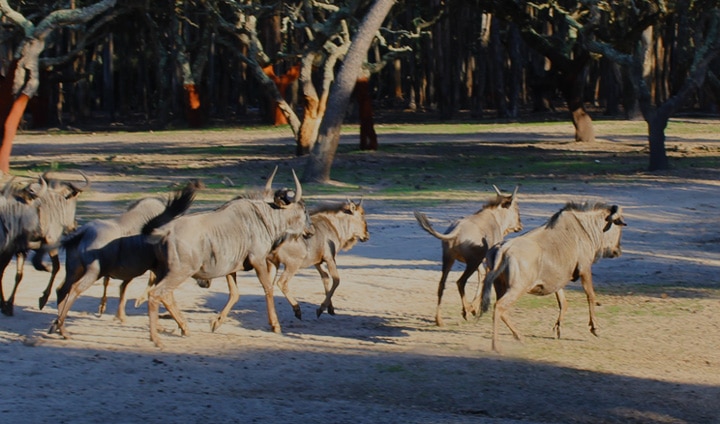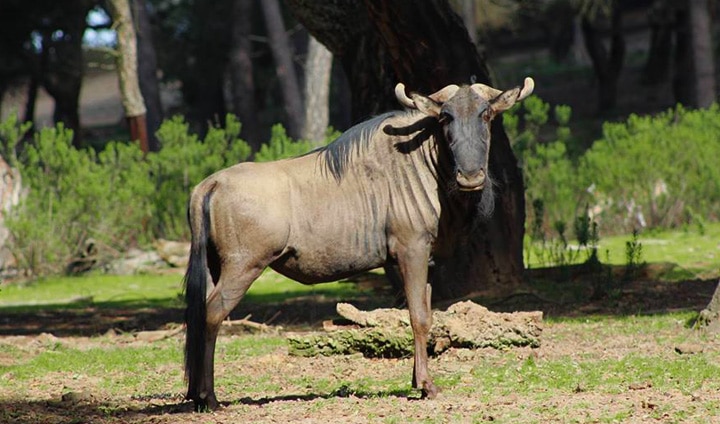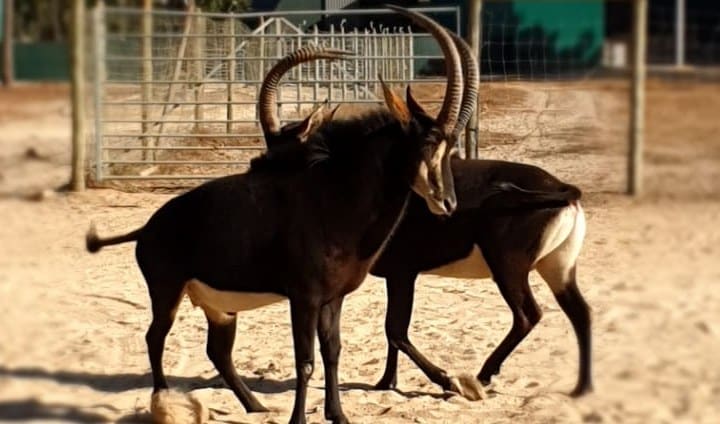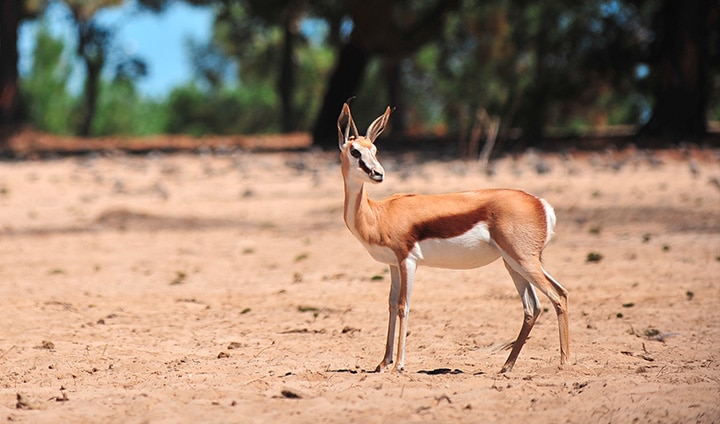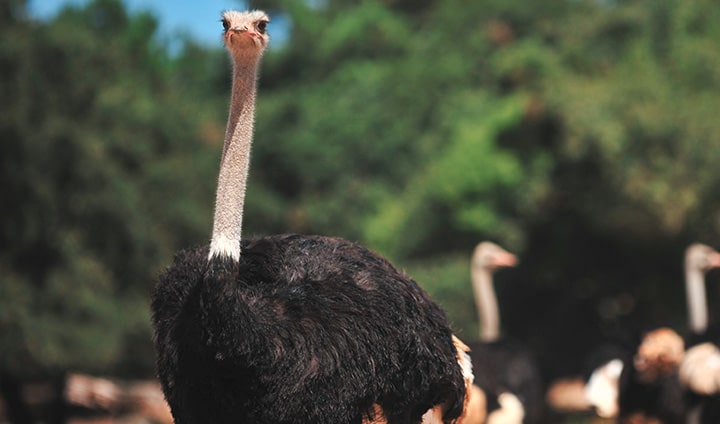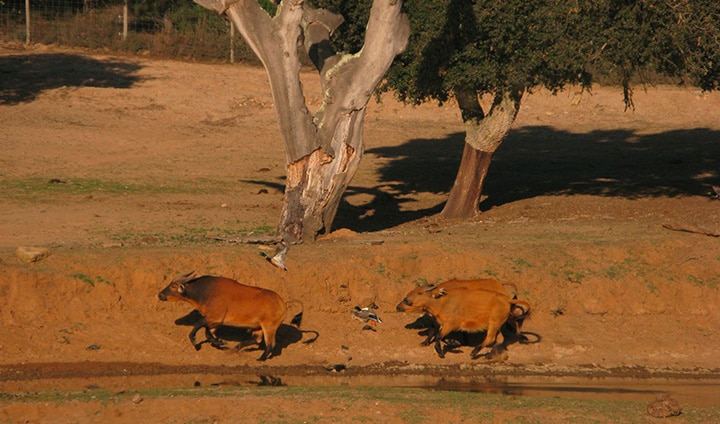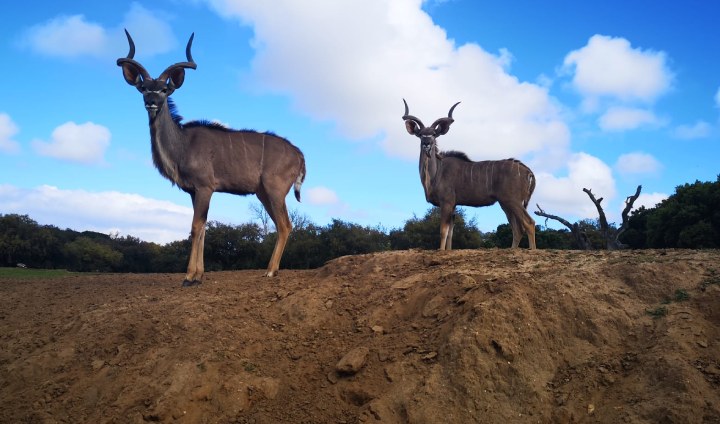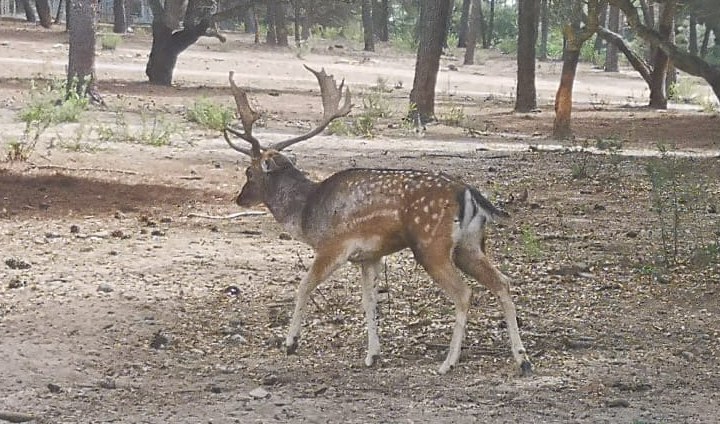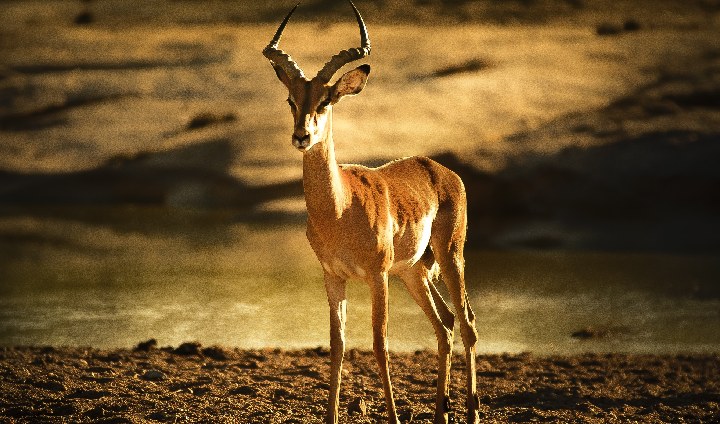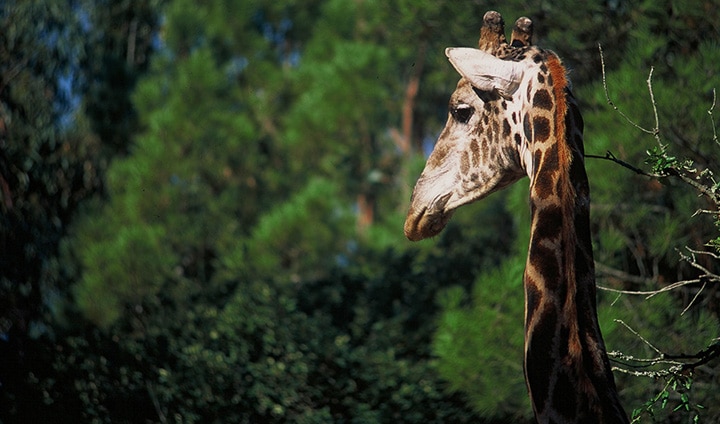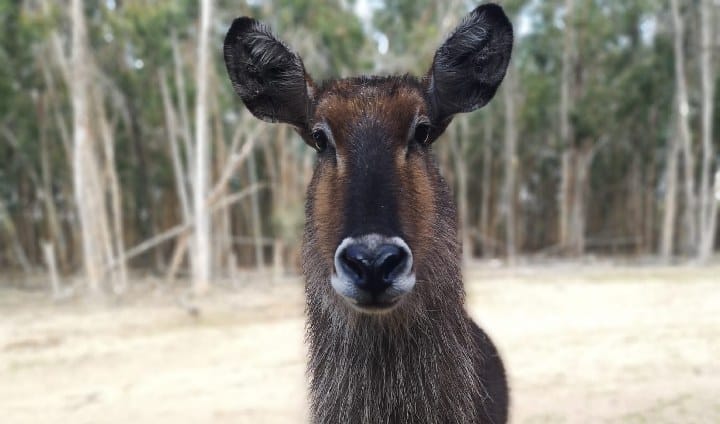Distribution and Habitat: Gnus are very scattered throughout the African continent, being that there is greater diversity from Kenya to Namibia.
Diet: Gnus are considered grazers and will feed during the day and under the moonlight. Their preferred foods are the fast-growing pastures found in the savannas and plains. When food is scarce, gnus do gigantic migrations in search of new feeding places.
Reproduction: The reproductive season lasts for three weeks per year and coincides with abundant food conditions, so that the success rate is as high as possible. Pregnancy lasts about 8 months and only one calf is born, weighing approximately 19 kg. Six minutes after being born, the calf is already standing and will search for food immediately. At eight months of age, the calf abandons the protection of the mother and seeks a new family group.
Behaviour: When sedentary, gnus are highly territorial and tend to form groups. At the time of migration, these groups break up. Migrations are due to the availability of water and an abundance of food for the whole group. These animals can travel more than 50 km in search of a new feeding place.
Conservation Status: Less Concerning (LC)
Class: Mammalia
Order: Artiodactyla
Family: Bovidae
Dimensions: 1.7 m – 2.4 m long
Weight: 120 kg -270 kg
Lifespan: 21 years in Captivity and 20 years in the wild


